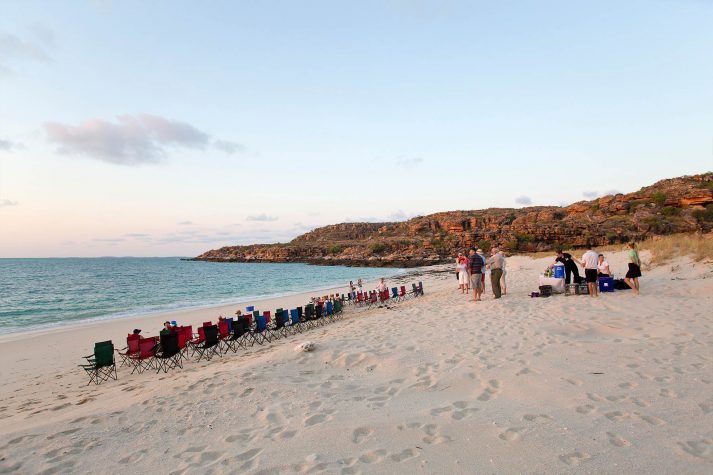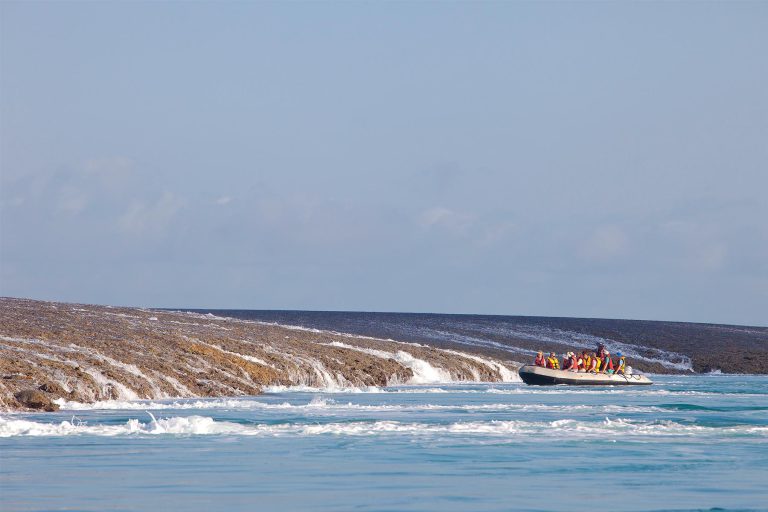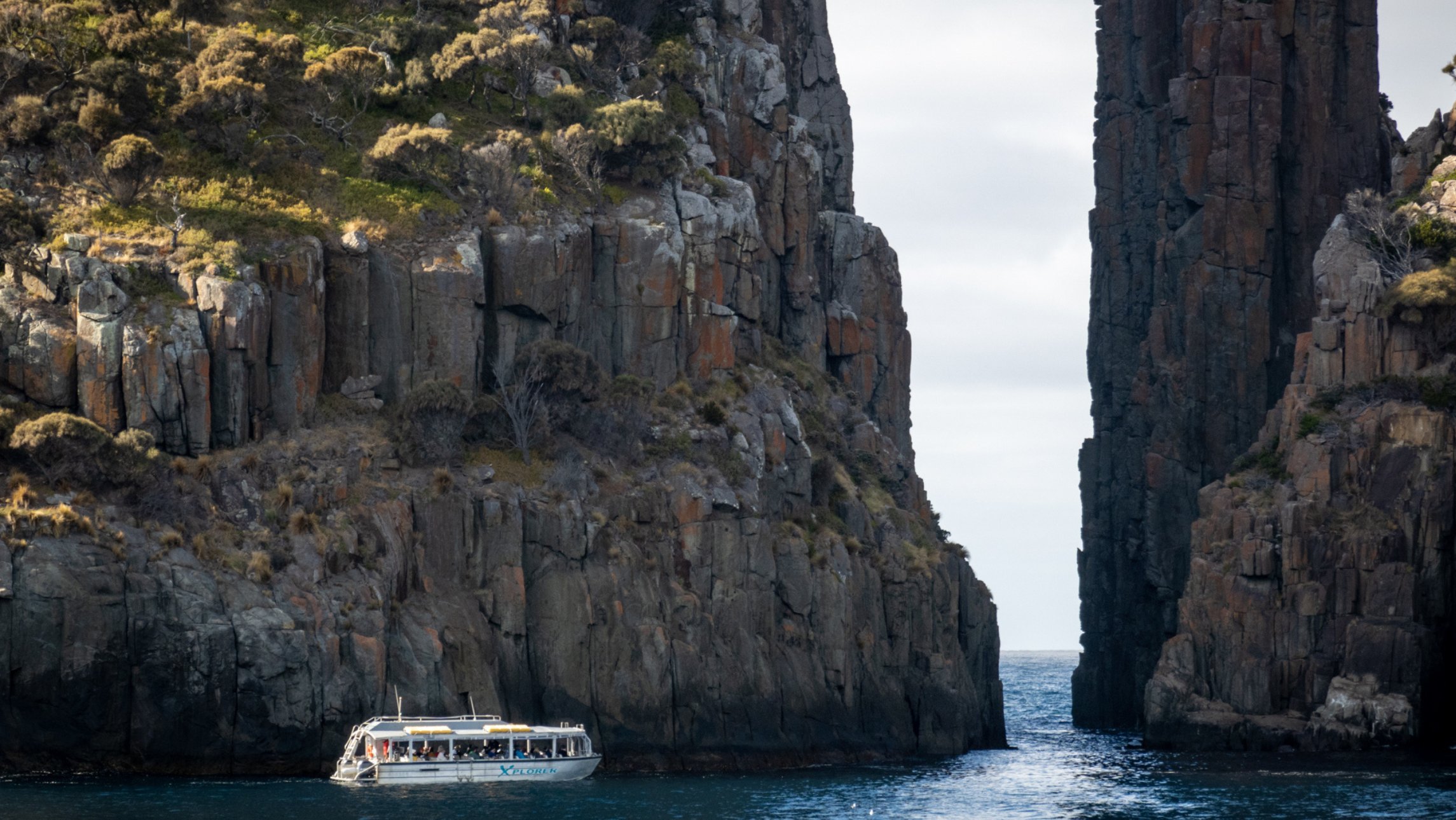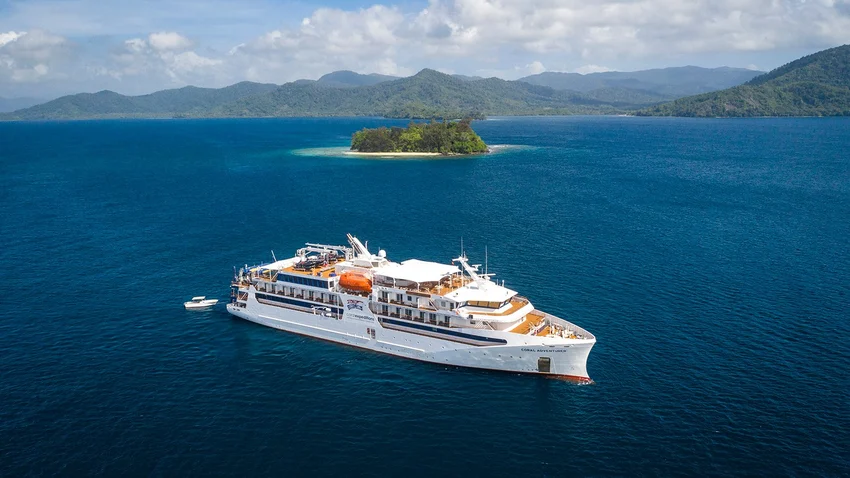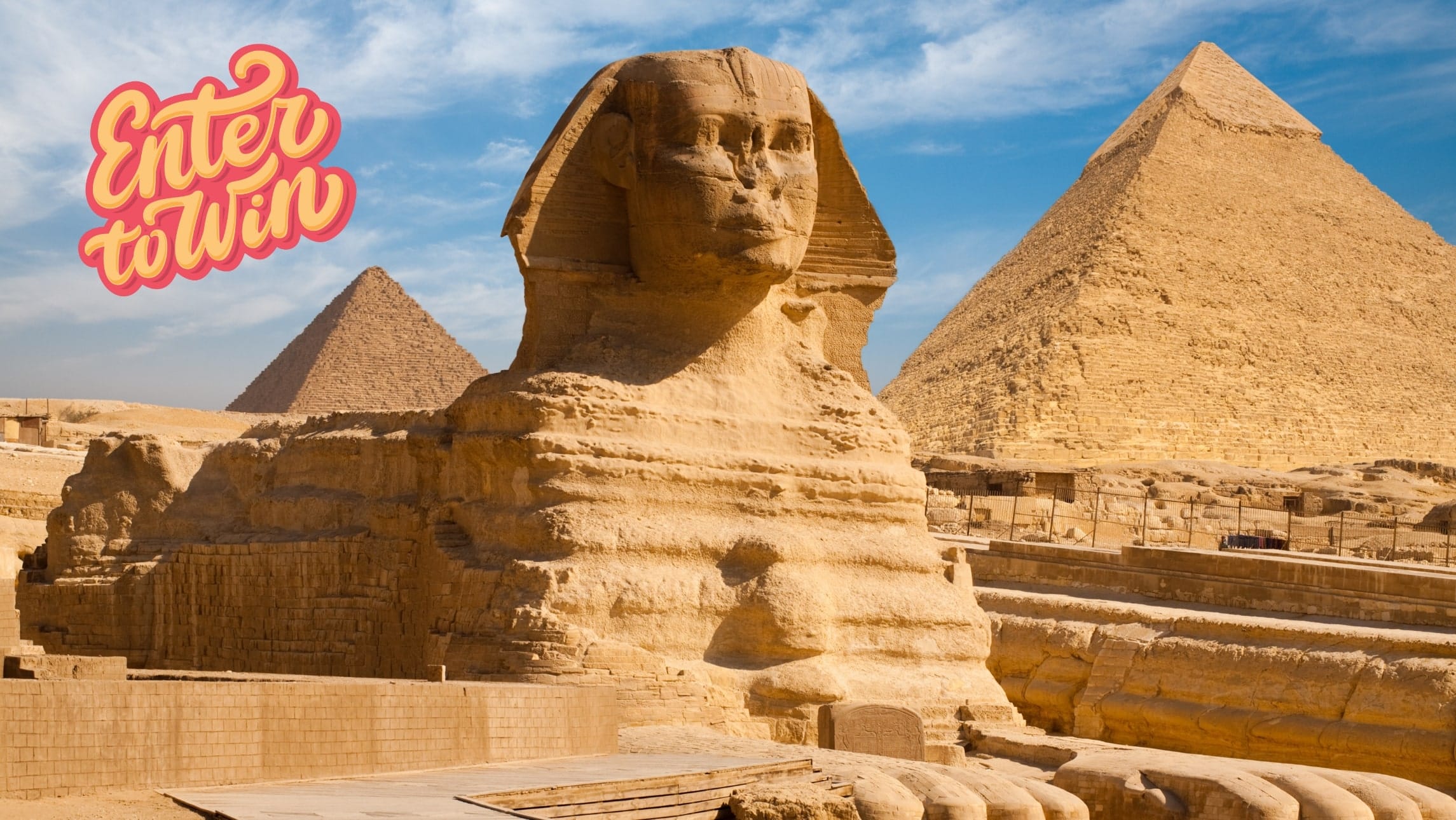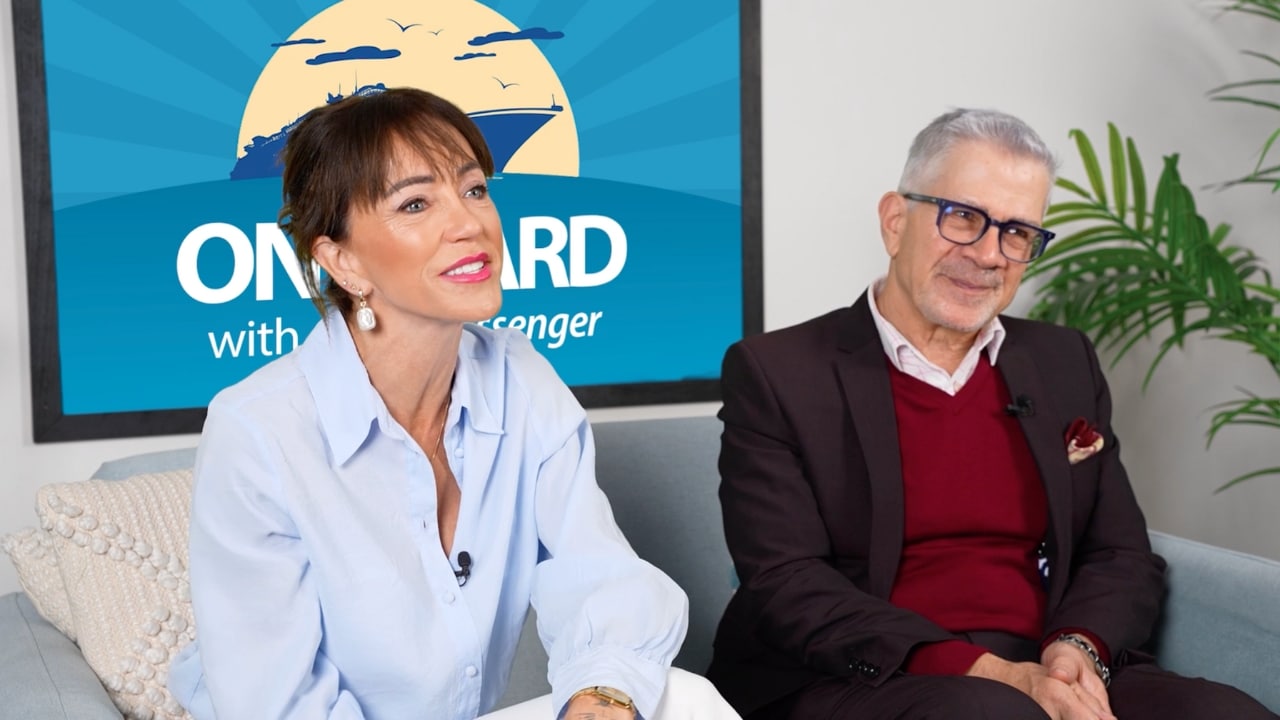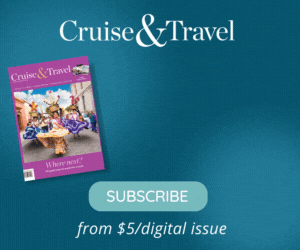Western Australia’s Kimberley region has one of the world’s wildest coastlines, much of which is only accessible by sea, writes Mark Daffey.
We all know the story about Moses and the Israelites crossing the Red Sea, right? Well, I’m witnessing a natural phenomena that seems about as close as I’ll ever get to a re-enactment of that Biblical event.
Hours earlier, Montgomery Reef was submerged beneath several metres of tepid Indian Ocean water.
But with the ebbing tides, the seas have parted to reveal the world’s largest platform reef, and it’s like nothing I’ve ever seen.
The tides along this remote part of the Kimberley region, Western Australia, are some of the largest on the planet, dropping and rising by as much as 12 metres during the massive spring tides. As such, they recede with such ferocity that much of the seawater gets left behind, pooling in depressions on the reef’s surface then funnelling back into the ocean as gushing cascades. One Swiss couple likens the spectacle to the Norwegian fjords. A Tasmanian imagines white-water rafting down them.
But it’s not just waterfalls we see here – there’s wildlife, too. All sorts of seabirds find nourishment in these nutrient-rich waters, from white-bellied sea eagles snatching up fish in their talons to snowy-feathered eastern great egrets that loiter along the water’s edge, hoping to pluck a meal from the shallows. A Stokes’ sea snake swims alongside us in our tender. We spot stingrays and sawfish. And juvenile green turtles use this sheltered space as proxy nurseries because of the protection it offers.
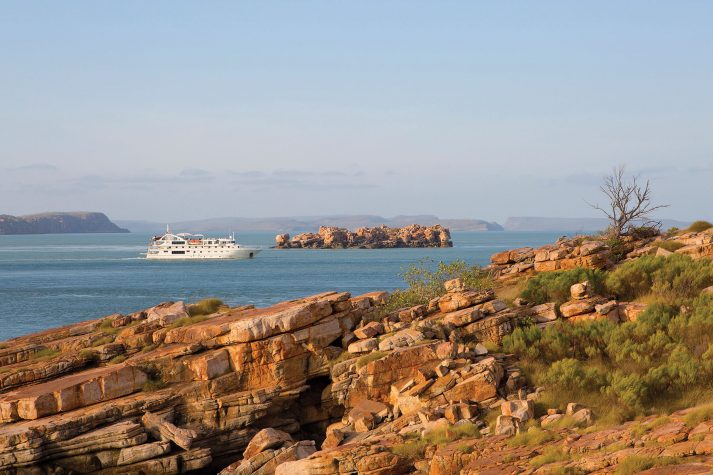
“Every shark known to man also resides in these waters,” announces our ship’s naturalist Ian Morris, who lists tiger, hammerhead and reef sharks among those lurking beneath the surface. About the only nasty species missing here – but found everywhere else along this coast – is crocodiles.
“This would be a horrible habitat for them,” explains Morris. “The coral would tear up their soft undersides.”
The ship that’s ferrying us along this barely populated stretch of wilderness, from Broome to Darwin, is Coral Discoverer – a slick, 63-metre-long vessel that’s equipped to handle the fluctuating tides found in these parts. Its three-metre draught enables it to navigate shallow waters, while automated stabilisers allow it to float in the open seas as if in a bathtub.
Late each afternoon, just as the sun sets, guests gather on the open-air Sun Deck up top to order the day’s cocktail special or to drink chilled beer and wines. The lounge doubles as a theatre for guest lecturer presentations and documentary film viewings. Thirty-six spacious en-suite staterooms, some with private balconies, are spread across three levels. And the ship’s tender, Xplorer, comfortably fits all 72 passengers during a minimum of two shore excursions per day.
So, what’s worth seeing? First up are the islands of the Buccaneer Archipelago, where swirling rock contortions caused by shifting landmasses are bound to boost your appreciation of the science of geology. The tides are at their most extreme here and you’ll see cerulean whirlpools powerful enough to swallow undersized dinghies. High above the waterline lies evidence of Aboriginal occupation from 30,000 years ago. And, depending on the tides, you may visit the Lacepede Islands, a safe haven for lesser frigatebirds, brown boobies and crested terns.
Further north is what many consider to be the highlight of a Kimberley cruise – the Horizontal Falls. Each second here, one million litres of water flood through two narrow gaps in the King Leopold Ranges, leading Sir David Attenborough to christen it “one of the greatest natural wonders of the world”. Called a tidal pinch, it has been compared to an ocean trying to fit through a letterbox and is best experienced on a thrilling Zodiac ride.
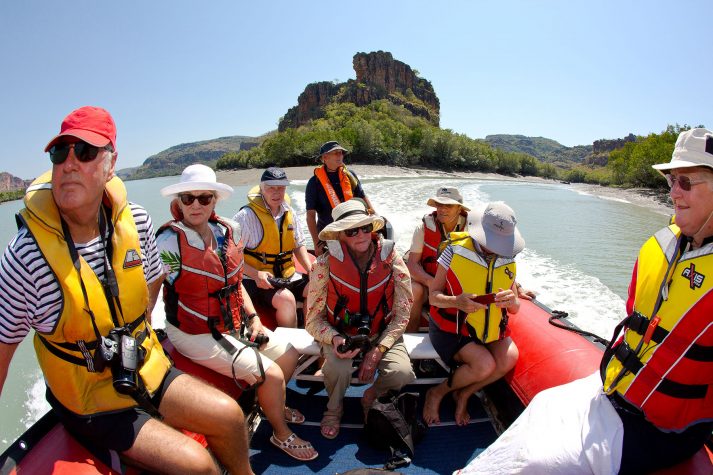
Each cruise differs – again, because of the tides. The ship’s expedition leader may incorporate excursions up or into little-visited rivers and bays, or through crocodile-infested mangrove eco-systems that Morris describes as “nature’s supermarkets”. Beach walks visit ancient middens and Aboriginal rock-art galleries.
Perhaps the prettiest area is around Raft Point in Doubtful Bay, where headlands and islands rise vertically from the sea. A close second would be Prince Frederick Harbour, at the mouth of the Hunter River. Watching the colours change here at dawn will be
a treasured memory.
Maritime explorers carved their initials into a bulbous boab tree at Careening Bay, in the Prince Regent Nature Reserve, where the spring-fed King Cascades flows year-round into an ink-black lagoon populated by menacing salties.
More seasonal is King George Falls, the state’s largest single drop waterfall by volume. Even when the falls are reduced to a trickle late in the dry season, the tender voyage beneath towering sandstone walls is still mighty impressive.
On top of all that, there are fishing opportunities and optional helicopter flights to Mitchell Falls, Western Australia’s highest. Add them all up and you’ll soon come to realise that the choices are many and varied… just like the tides, really.
